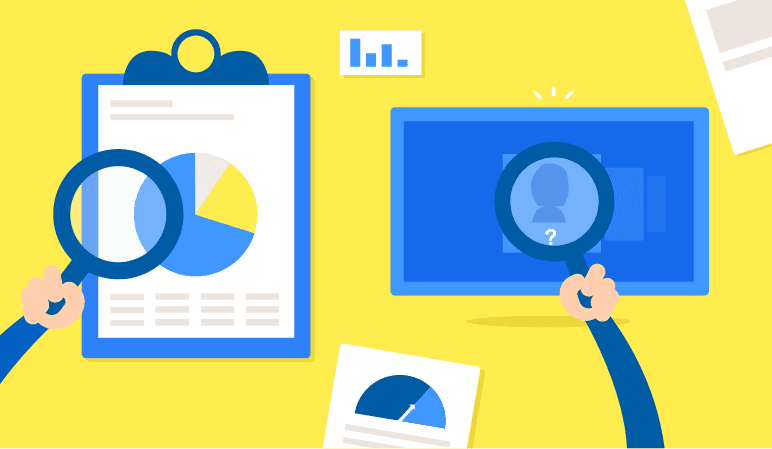What’s HR analytics and how can you put it to good use?
During this article we talk about the world of HR analytics, highlighting its importance and practical applications in optimizing workforce management strategies.

More and more operational processes are becoming data-driven. For starters, making HR decisions based on gut instinct is old-school. Nowadays, it’s increasingly data-driven! And HR analytics is a prime example!
So, what is HR analytics?Copied
Human Resources (HR) is a discipline that used to rely on subjective observations. But over the decades, HR’s become more analytical and strategic.
HR analytics combines data mining, statistics, analysis, and modeling to help you improve employee productivity.
It primarily helps HR managers in the following areas:
- making the right staffing decisions
- attracting talented new staff
- retaining existing employees
- training employees
Ultimately, HR analytics is simply one of several tools in your toolkit for getting the most out of your workforce now and in the future.
But what should you measure? And why?Copied
There are several benefits to using HR analytics:
1. Operational reports
Operational reports present information about past events within your organization. In effect, they’re a recap of past processes and results, for example an evaluation of staff influx over the last six months. Using HR analytics, you can organize your data so that your operational reports are more reliable and accurate.
2. KPI dashboards
Dashboards display what’s happening within your organization in real time. KPIs are a measure or indicator of your organization’s performance over a given period of time.
Important KPIs for your HR department might include:
- input/throughput/output
- absenteeism
- salary
- costs
- training
HR analytics allows you to map how these issues correlate with the figures.
3. Strategic analyses
You can use statistics at a strategic level to identify causes and effects. For example, is there a correlation between employee satisfaction and improved results (higher sales figures / productivity per FTE)? Identifying cause and effect is vital to making the right short- and long-term strategic decisions.
4. Predictions
Advanced statistical tools and technologies, for example AI, make it possible to predict the future. Predictions provide a glimpse of what might happen tomorrow if you take option A or option B, and are based on models and past patterns and trends.
HR analytics is one of the best ways to retrieve this information in a structured fashion. You can use these analyses for the following:
- predicting turnover
- managing risks
- assessing professional development needs
- predicting staff turnover
- estimating effect of training on productivity

Action planCopied
But how should you go about embedding HR analytics into your day-to-day operations? Follow the steps below to make HR analytics a permanent and valued part of your operational processes:
1. Formulate clear problem statements and queries
Formulating your queries clearly and concisely helps you maintain a focus on goals that are of the greatest value to your organization and operations.
Examples of clear, concise HR queries include:
- Does higher employee satisfaction result in higher productivity and turnover?
- Does a specific IT training program lead to better or faster applications and software?
- Do communication and collaboration tools for remote working make your organization more appealing to talented young professionals?
2. Check your data
Successful HR analytics relies fully on correct and accurate data, or in other words, “Garbage in, garbage out!” Always make sure that the data you’re using for your analytics is reliable and correct. Graphical analyses are a great way to quickly check whether your data’s sound.
3. Run your analysis and capitalize on the results
Crunching the numbers is all well and good, but it’s the message behind these numbers that’s really important. Numbers are meaningless if you don’t take action or capitalize fully on the underlying message. And don’t forget to involve people at all levels and from all parts of your organization if you’re looking to get the right answers from your analytics.
4. Share the results
The final piece of the HR analytics puzzle involves sharing the message. In other words, “What are we going to do with the results?” It’s vital that you communicate them clearly and concisely to all stakeholders, from the boardroom to the shop floor. Sometimes, this will mean you’ll have to present complex information in an easy-to-understand fashion. At a minimum, what the analysis set out to determine, what were its results, and how to interpret its findings.
Tips for putting HR analytics to the best possible useCopied
The action plan we provided above forms a solid foundation for implementing HR analytics. The tips below will help you build upon this foundation.
- Make sure the data you’re using is ‘clean’. This can be a big problem if your data hasn’t always been well maintained, is locked away in silos, or is derived from a wide range of metrics.
- Adopt a human approach. This means that you explain to your staff what the purpose of HR analytics is. What’s more, you should also make it clear how you perform your analyses and what their results mean for your staff. Don’t overlook the individual.
- Inquire regularly about employee satisfaction and engagement levels, for example using surveys or polls, as these will reveal interesting correlations.

Make it visual!Copied
As you’ve read, HR analytics offers many benefits to your organization, both short-term and long-term. But to implement HR analytics and make it a resounding success, it’s important you have the right tools to monitor the progress your staff are making.
Skills matrices are an ideal solution and provide a schematic snapshot of everything your staff can and can’t do. Download one of these skills matrix templates to get a feel for how they work.
Alternatively, find out what our special-purpose skills management software can do to make sure your HR policies are based on the latest and most accurate information and insights!

